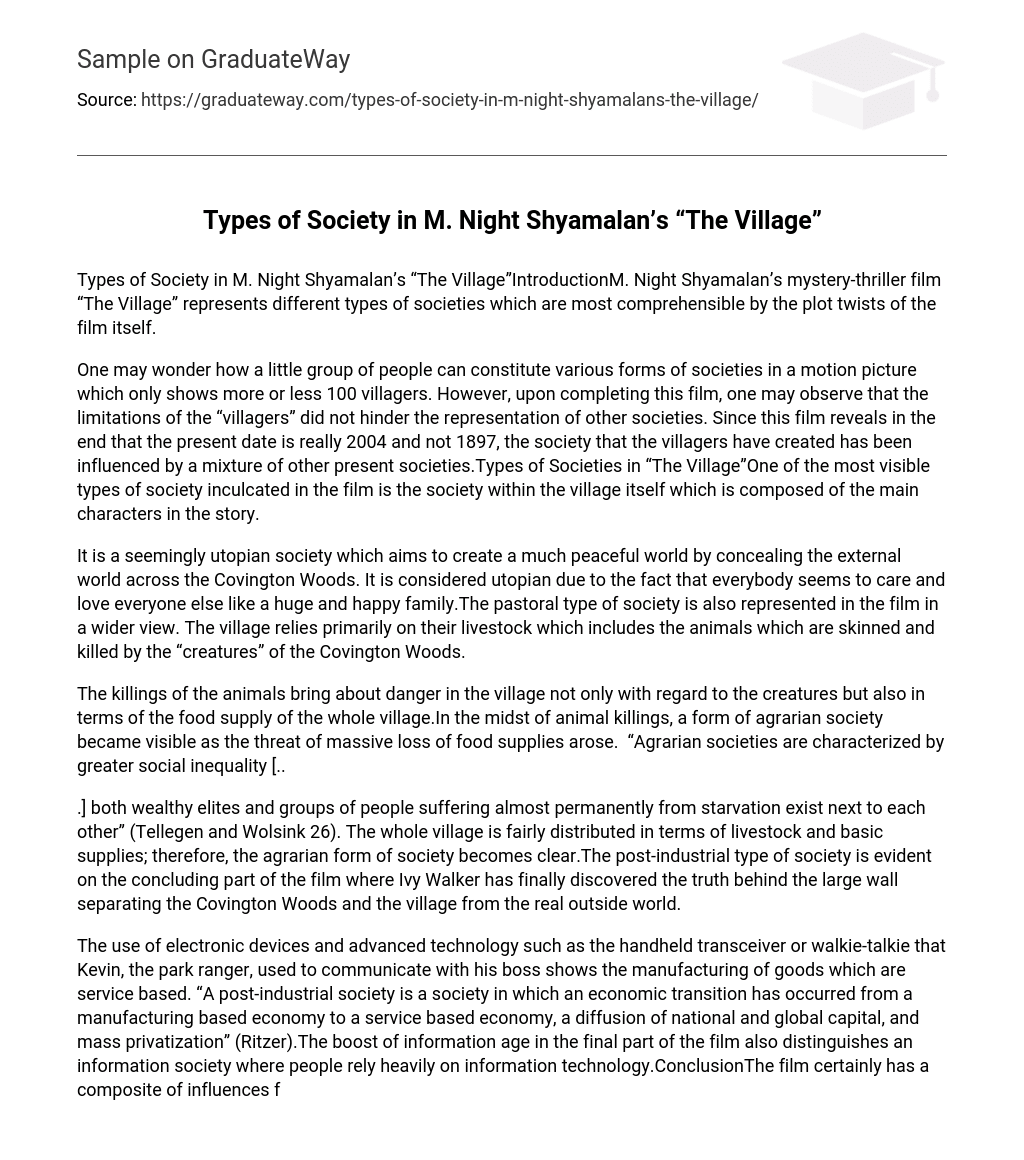Types of Society in M. Night Shyamalan’s “The Village”IntroductionM. Night Shyamalan’s mystery-thriller film “The Village” represents different types of societies which are most comprehensible by the plot twists of the film itself.
One may wonder how a little group of people can constitute various forms of societies in a motion picture which only shows more or less 100 villagers. However, upon completing this film, one may observe that the limitations of the “villagers” did not hinder the representation of other societies. Since this film reveals in the end that the present date is really 2004 and not 1897, the society that the villagers have created has been influenced by a mixture of other present societies.Types of Societies in “The Village”One of the most visible types of society inculcated in the film is the society within the village itself which is composed of the main characters in the story.
It is a seemingly utopian society which aims to create a much peaceful world by concealing the external world across the Covington Woods. It is considered utopian due to the fact that everybody seems to care and love everyone else like a huge and happy family.The pastoral type of society is also represented in the film in a wider view. The village relies primarily on their livestock which includes the animals which are skinned and killed by the “creatures” of the Covington Woods.
The killings of the animals bring about danger in the village not only with regard to the creatures but also in terms of the food supply of the whole village.In the midst of animal killings, a form of agrarian society became visible as the threat of massive loss of food supplies arose. “Agrarian societies are characterized by greater social inequality [..
.] both wealthy elites and groups of people suffering almost permanently from starvation exist next to each other” (Tellegen and Wolsink 26). The whole village is fairly distributed in terms of livestock and basic supplies; therefore, the agrarian form of society becomes clear.The post-industrial type of society is evident on the concluding part of the film where Ivy Walker has finally discovered the truth behind the large wall separating the Covington Woods and the village from the real outside world.
The use of electronic devices and advanced technology such as the handheld transceiver or walkie-talkie that Kevin, the park ranger, used to communicate with his boss shows the manufacturing of goods which are service based. “A post-industrial society is a society in which an economic transition has occurred from a manufacturing based economy to a service based economy, a diffusion of national and global capital, and mass privatization” (Ritzer).The boost of information age in the final part of the film also distinguishes an information society where people rely heavily on information technology.ConclusionThe film certainly has a composite of influences from numerous types of societies.
The influences are obviously rooted from the film plot that the elders of the village have already witnessed the outside world where diverse cultures and societies exist. Work CitedRitzer, George. The Coming of Post-Industrial Society. New York: McGraw-Hill, 2007.
Tellegen, Egbert and Maarten Wolsink. Society and Its Environment: An Introduction. Netherlands: Routledge, 1998.The Village.
Dir. M. Night Shyamalan. Perf.
Bryce Dallas Howard, Joaquin Phoenix. United States of America: Touchstone Pictures, 2004.





